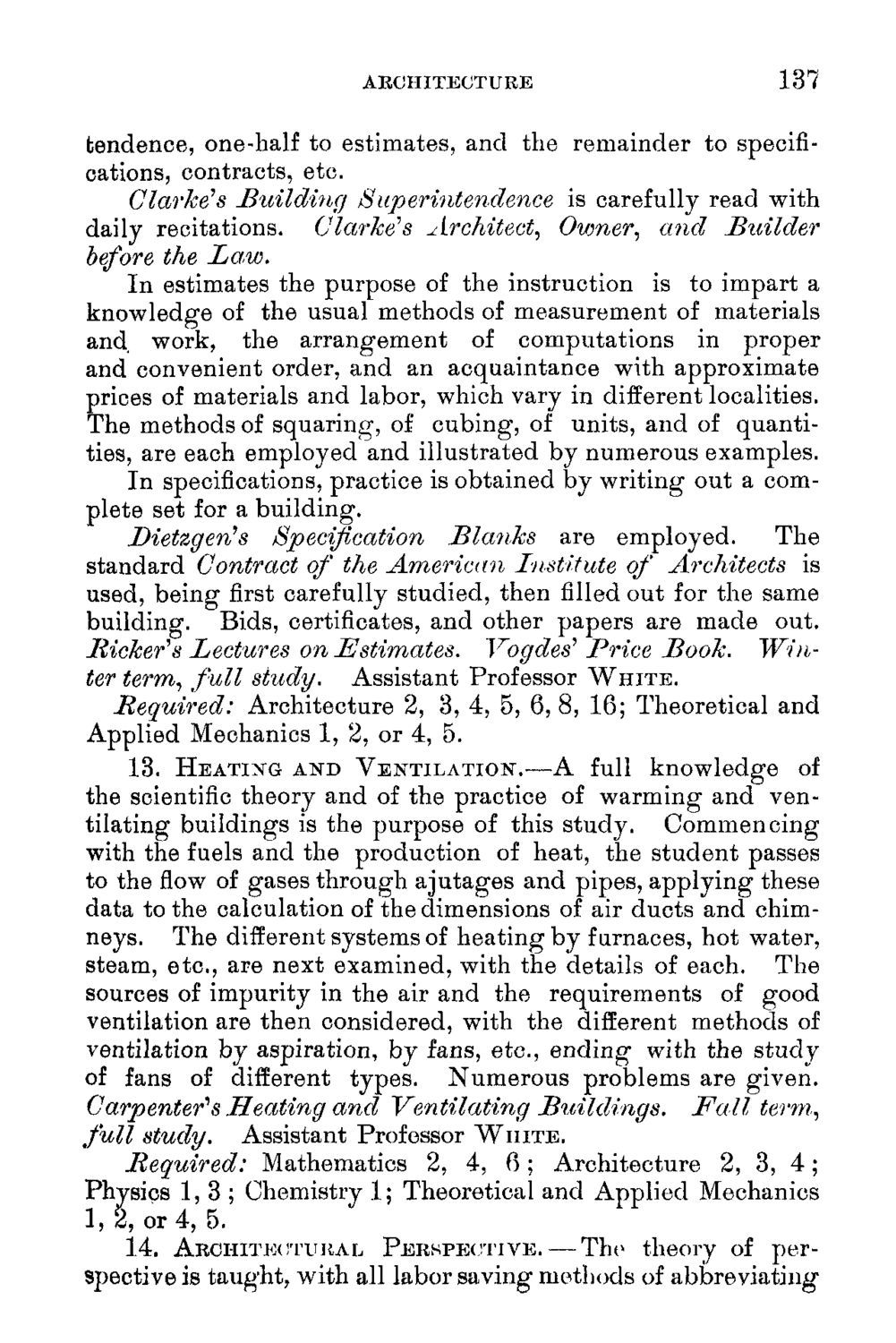| |
| |
Caption: Course Catalog - 1895-1896
This is a reduced-resolution page image for fast online browsing.

EXTRACTED TEXT FROM PAGE:
ARCHITECTURE 137 tendence, one-half to estimates, and the remainder to specifications, contracts, etc. Clarke's Building Superintendence is carefully read with daily recitations. Clarke's Architect, Owner, and Builder before the Law. In estimates the purpose of the instruction is to impart a knowledge of the usual methods of measurement of materials and work, the arrangement of computations in proper and convenient order, and an acquaintance with approximate prices of materials and labor, which vary in different localities. The methods of squaring, of cubing, of units, and of quantities, are each employed and illustrated by numerous examples. In specifications, practice is obtained by writing out a complete set for a building. Dietzgen's /Specification Blanks are employed. The standard Contract of the American Institute of Architects is used, being first carefully studied, then filled out for the same building. Bids, certificates, and other papers are made out. lacker's Lectures on Estimates. Vogdes' Price Book. Winter term, full study. Assistant Professor WHITE. Required: Architecture 2, 3, 4, 5, 6, 8, 16; Theoretical and Applied Mechanics 1, 2, or 4, 5. 13. HEATIXG AND VENTILATION.—A full knowledge of the scientific theory and of the practice of warming and ventilating buildings is the purpose of this study. Commencing with the fuels and the production of heat, the student passes to the flow of gases through ajutages and pipes, applying these data to the calculation of the dimensions of air ducts and chimneys. The different systems of heating by furnaces, hot water, steam, etc., are next examined, with the details of each. The sources of impurity in the air and the requirements of good ventilation are then considered, with the different methods of ventilation by aspiration, by fans, etc., ending with the study of fans of different types. Numerous problems are given. Carpenter's Heating and Ventilating Buildings. Fall term, full study. Assistant Professor WHITE. Required: Mathematics 2, 4, 6; Architecture 2, 3, 4 ; Physics 1,3; Chemistry 1; Theoretical and Applied Mechanics 1, 2, or 4, 5. 14. ARCHITECTURAL PERSPECTIVE. — The theory of perspective is taught, with all labor saving methods of abbreviating
| |